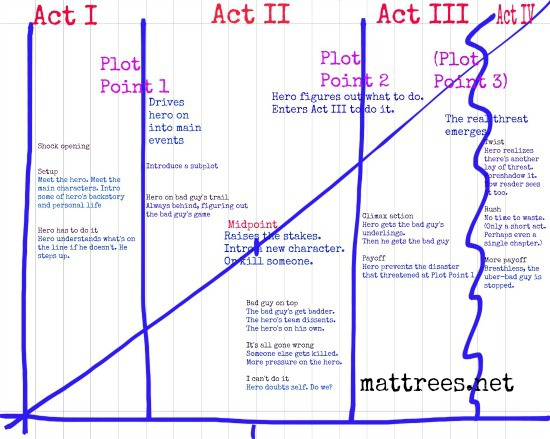This thriller writing checklist is a simple route through the process of planning and writing a thriller.
It’s hard to be a writer and, if you aspire to be one, it’s tough enough to get ahead, so you need all the advice you can get. In this case, for once, I hope you’ll find that free advice is good advice.
Throughout my writing career, in which I’ve so far published nine novels, a book of nonfiction, and won several awards including a UK Crime Writers Dagger, I have focused on structure in my books. I saw the importance of this when I asked other journalists—I was working for Time Magazine in the Middle East at the time—if they had any advice for me, as I signed a contract to write a book about that region. Most said that writing their book—usually they’d stopped at one book—was the most unpleasant thing they’d ever had to do.
Gradually, I realised what the problem was. They had developed the ability to hold a news story in their heads, to write it without much planning. That was because they understood the structure of a news story, having written thousands of them. But they didn’t know about book structure, so they had become bogged down.
I figured out how to structure my book and plotted it out in great detail. I loved the experience of writing and finished ahead of schedule. Unlike my colleagues, I wanted to do it again.
Structures for thriller writing
With each of my novels, I’ve experimented with different ways of structuring and writing them. I’ve tried to stretch myself. I’ve written about different subjects—a Palestinian detective, Mozart’s sister, wartime Berlin, Italy in the Baroque period, the Syrian civil war, cybercrime, male and female protagonists—and each time I’ve loved doing it.
Some of my books sold better than others and some were optioned for the movies. Some won prizes, while others just made me happy to be alive as long as I was writing them. But there were times when it was a struggle, too. Then, the thing that got me out of a slump or the periods of self-hatred that afflict every writer was the same—structure.
And a few little tricks, too, that I’ve included in this guide.
How to use this thriller writing checklist
I’ve left spaces in the post for you to print it out and fill in the blanks by hand. I think that’ll help you clarify your ideas and plot them out.
I’ve kept this post to the barebones, however. You won’t find essays here. Just prompts that boil it all down—you don’t need to read a long disquisition on writing now; you need to write.
Once you’ve written your book, please be in touch with me to let me know how you used it. Get in touch through the contact page on this blog, or connect with me on Facebook or Twitter (@MattReesAuthor).
The thriller writing checklist
Your Hero
Check that you have a:
Dynamic protagonist.
Your hero:
Does things. Doesn’t allow things to just happen.
What is his/her goal.
Is she/he likeable?
What’s at stake for the hero? Does he/she risk something?
If the hero doesn’t get what he/she wants, what will happen? He/she will lose something. What?
What must he/she learn to prevail?
Remember: Reveal the character in the choices he/she makes under pressure.
Before you think of anything else get some random ideas about:
A stunning opening
A cliffhanger
A twist
An action scene that would make you gasp
If these don’t come easily, try starting your thought with “What if….”
Then, you get to the big What if…:
The Inciting Incident
This event upsets the balance of the protagonist’s life in a big way. Think of the worst possible thing that could happen to the protagonist. Though maybe it turns out (in the end) to be the best thing.
What is it?
Here’s one kind of thriller plot:
The Hero on the Run
Use it in many different situations and with a different hero. Here’s how it progresses:
Hero witnesses or causes an inciting event
Hero realises s/he’s not safe from the antagonist
Hero can’t trust the authorities to deal with the antagonist
Hero goes on the run, pursued by the antagonist
Hero involves an ally in his/her escape
Hero narrowly avoids capture
Hero confronts the antagonist
Plotting
Some writers prefer not to plot their thrillers, or to do so very minimally. You’re reading a checklist that includes plot elements, so I guess you aren’t one of those writers. Let’s skip over whether you need to know where you’re headed before you write, in that case. I usually like to know the direction I’m going to take, because that way I won’t run off a cliff….
Step 1.
Write what your thriller is about. In seven words.
Step 2.
Check out this diagram of the plot of a thriller. It works for other kinds of novels too, but I prepared it for this guide. Use it to sketch out the plot of your thriller.

Remember, each event/scene in the plot is a called a beat. A beat is an action or reaction. It brings one meaningful change in the character.
Every scene is a strong event.
Every scene is a turning point.
In my diagram, you’ll need about 29 scenes for a mystery novel and 40 for a thriller.
As you’re working the plot, remember:
The Hero leads.
Look at the plot. Is s/he active?
Don’t let him/her be dragged through the story.
What’s the hero’s goal? Is it clear?
Does the hero tell others what to do? Do others look to the hero for answers/a lead?
Is the bad guy bad enough? If s/he isn’t, it diminishes our hero. Add something that makes him/her sympathetic somehow. In the backstory, justify him/her.
Whenever you can, heap on more trouble for the hero.
The Ending:
Has to be a knock-out. Very high stakes. Outcome in doubt until the last moments.
Hero gives up something, so that good can prevail. Someone he loves. Something he wants.
Try a false ending: We think it’s all over, but then…the real threat is identified. What is it?
A couple more plotting notes:
If you have a chase scene, how does the hero feel during the chase? We’d better know that. Otherwise it’s just like watching someone go out for a jog.
Twists at the end of chapters. Make them:
- jolting: Someone is killed. Or there’s an unexpected demand.
- mystifying: A clue arrives but it’s in a code. Some object turns up; what is it?
- build a connection to someone unexpected.
- create a dilemma: The hero can do something now and resolve a piece of the puzzle, but s/he may cause harm to someone else.
Dialogue
Look at any dialogue you may have written, then try these tips:
Put the meaning at the end of the line.
Insert conflict in the dialogue, on the surface and/or under it.
Information doesn’t come right at the start of a dialogue. First, some jousting.
Not just talk. Something physical should be happening.
No talking and driving. No thinking and driving. Driving isn’t really something happening. Put the dialogue in the middle of real action.
When you’re writing, remember these points:
George Orwell said that if you’ve heard a particular turn of phrase before, it’s probably a cliche, so think of another way to say it.
Point of View: This refers to the character whose feelings and thoughts can be described in a particular chapter. Use only one POV per chapter. We can see what everyone else is doing and we can hear what our POV character thinks might be behind their actions and words, but we can’t hear it from them. So, one POV per chapter. Don’t switch within the chapter.
It’s a thriller, not an essay. Things happen. Don’t tell anyone anything. Don’t make an argument.
But even a thriller should have ideas within it. It’s not for stupid people—they’re watching reality shows, not reading your fiction. The idea is there, but it’s direct. It’s happening. It isn’t explained.
When we meet the hero, get the reader to like them right away. S/he doesn’t have to give money to a panhandler… but s/he could… So that we care about him/her.
Character arc: Every character must change. Where does each character start? And what are they like when the story is finished? What has changed about them?
You’re allowed only one piece of amazing computer hacking or coincidence or astonishing technological wizardry in each book. Otherwise you’re making it too easy for the hero.
Is the bad guy bad enough? As good as the hero is, that’s how bad the bad guy must be.
Danger: As the danger is closing in, we have to know what might happen as soon as possible. That way we root for the hero and know the stakes if he/she fails.
Now get writing…

 9 nonfiction lessons for fiction writing
9 nonfiction lessons for fiction writing